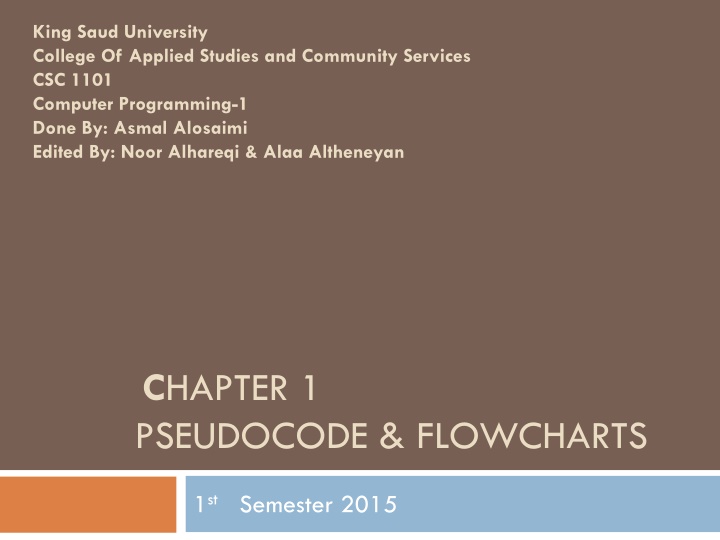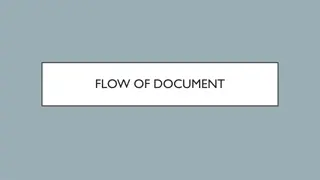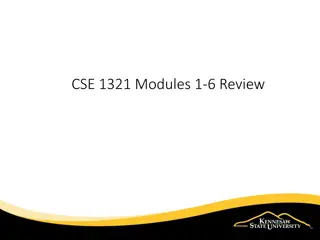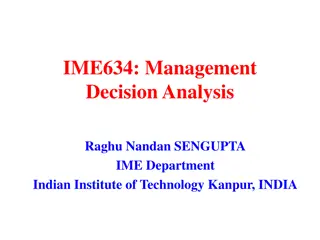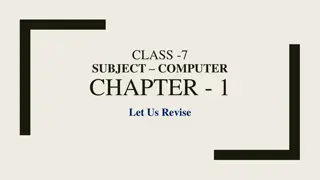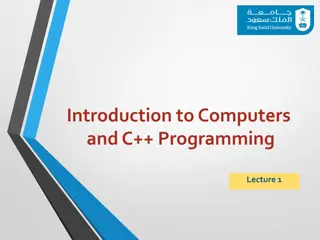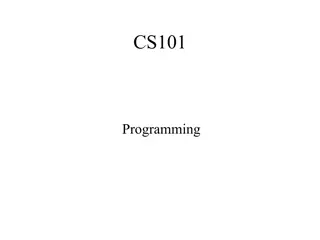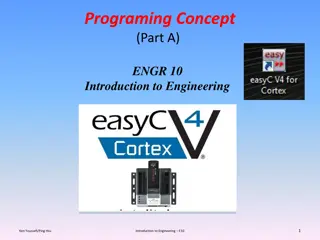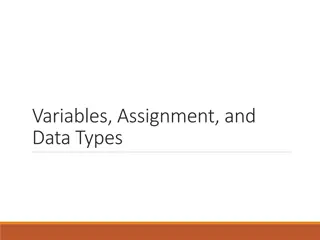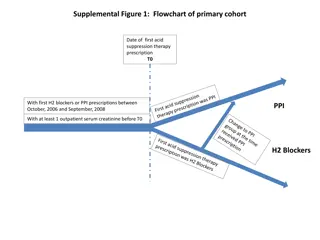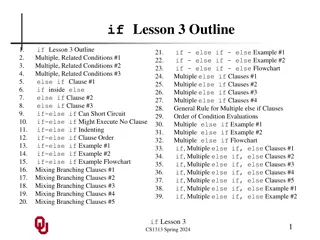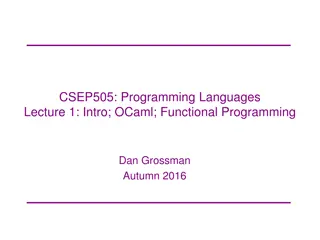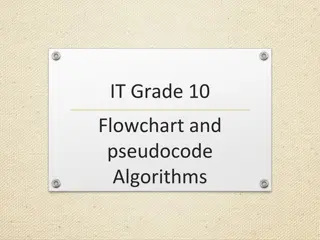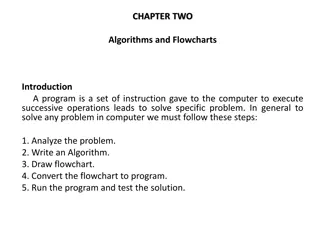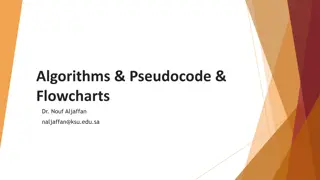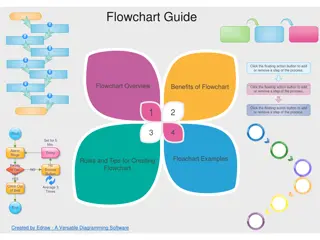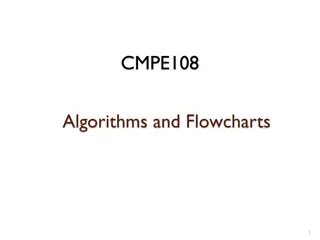Introduction to Pseudocode and Flowcharts in Computer Programming
Explore the concept of pseudocode and flowcharts in computer programming through a detailed explanation of their use in problem-solving, algorithm development, and program design. Learn how to define a problem, plan a solution, code a program, compile and run it, and test/debug the program effectively. Gain insights into creating pseudocode examples and designing flowcharts to represent algorithms visually. Enhance your understanding of key programming concepts with practical applications and illustrations.
Download Presentation

Please find below an Image/Link to download the presentation.
The content on the website is provided AS IS for your information and personal use only. It may not be sold, licensed, or shared on other websites without obtaining consent from the author.If you encounter any issues during the download, it is possible that the publisher has removed the file from their server.
You are allowed to download the files provided on this website for personal or commercial use, subject to the condition that they are used lawfully. All files are the property of their respective owners.
The content on the website is provided AS IS for your information and personal use only. It may not be sold, licensed, or shared on other websites without obtaining consent from the author.
E N D
Presentation Transcript
King Saud University College Of Applied Studies and Community Services CSC 1101 Computer Programming-1 Done By: Asmal Alosaimi Edited By: Noor Alhareqi & Alaa Altheneyan CHAPTER 1 PSEUDOCODE & FLOWCHARTS 1stSemester 2015
Levels of Program Development 2 1. Define the problem. Human thought 2. Plan the problem solution. writing the algorithm [pseudo-natural language (English, Arabic) or drawing the flowchart diagram). 3. Code the program. High Level Programming Language (C, C++, Java, ) 4. Compile the program. Machine Code 5. Run the program. 6. Test and debug the program. Asma Alosaimi
From Lec1 we learn that 3 When planning for a problem solution, algorithms are used to outline the solution steps using English like statements, called pseudocode. or A flowchart , which is a graphical representation of an algorithm. Asma Alosaimi
Pseudocode 4 Pseudocode is a detailed description of what a computer program must do, expressed in an English like language rather than in a programming language. Asma Alosaimi
Pseudocode Example 5 Write a Program to Print the Sum of two integer Numbers Start the program Read the first number and save in the variable ( N1 ) Read the second number and save in the variable ( N2 ) Sum the both numbers and save the result in the variable ( Sum ) Sum = N1 + N2 Print the variable ( Sum ) End the program 1. 2. 3. 4. 5. 6. Asma Alosaimi
Flowchart 6 A flowchart is a type of diagram that represents an algorithm , showing the steps as boxes of various kinds [ex: rectangles, diamonds, ovals], and their order by connecting these with arrows. Asma Alosaimi
Flowcharts Symbols 7 Start Start/End End Print n1 Read n1 Read/Print (input/output) N2 = n1+3 N2 = 5 Arithmetic Operations (process) n1 > 3 Decision , can be used with loops Move from step to step
Solution start 8 Draw a flowchart for a program that calculates and print the area and the perimeter of a rectangle. Input Length width Processing Area = length*width Perimeter = 2*( length + width) Output Area Perimeter Read L, W area = L * W perimeter = 2 (L+W) Print area Print perimeter End Asma Alosaimi
Example 2 9 Draw the flow chart for a program that calculates the total salary for an employee using this equation: Total_Sal = Salary +Overtime Asma Alosaimi
Solution 10 start Input Salary Overtime Processing Total_Sal = Salary +Overtime Output Total_Sal Read Salary Read Overtime Total_Sal = Salary +Overtime Print Total_Sal End Asma Alosaimi
Example 3 11 Draw a flowchart for a program that determine if the temperature degree is above or below freezing. Input Temp. Processing Check if Temp is below the 32 below freezing. Check if Temp is above the 32 above freezing. Output Print below freezing or above freezing Asma Alosaimi
Solution 12 Asma Alosaimi
Example 4 13 Draw a flowchart for a program that calculates the Zakat, where the user enter the amount of money then the program show the zakat. Zakat =(2.5/100) * amount. Zakat is not calculated if the amount is less than 1000 S.R Asma Alosaimi
Solution 14 Input amount. Processing Check if amount is below 1000 Zakat =0. Check if amount is above 1000 Zakat =(2.5/100) * amount Output Zakat Asma Alosaimi
Solution 15 Start Read amount yes no Amount > 1000 Zakat=0. Zakat=(2.5/100)*amount Print Zakat Asma Alosaimi End
Example 5 16 Draw a flowchart to find the sum of first 50 natural numbers. 1+2+3+ .. +50 Asma Alosaimi
17 Asma Alosaimi
